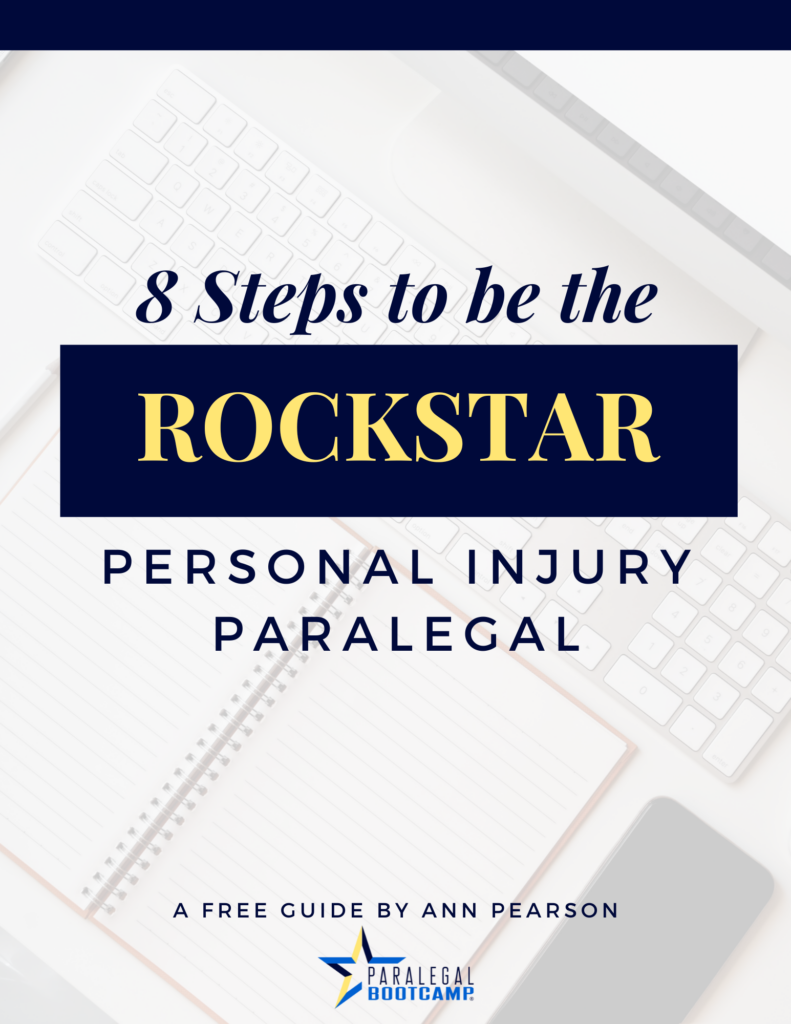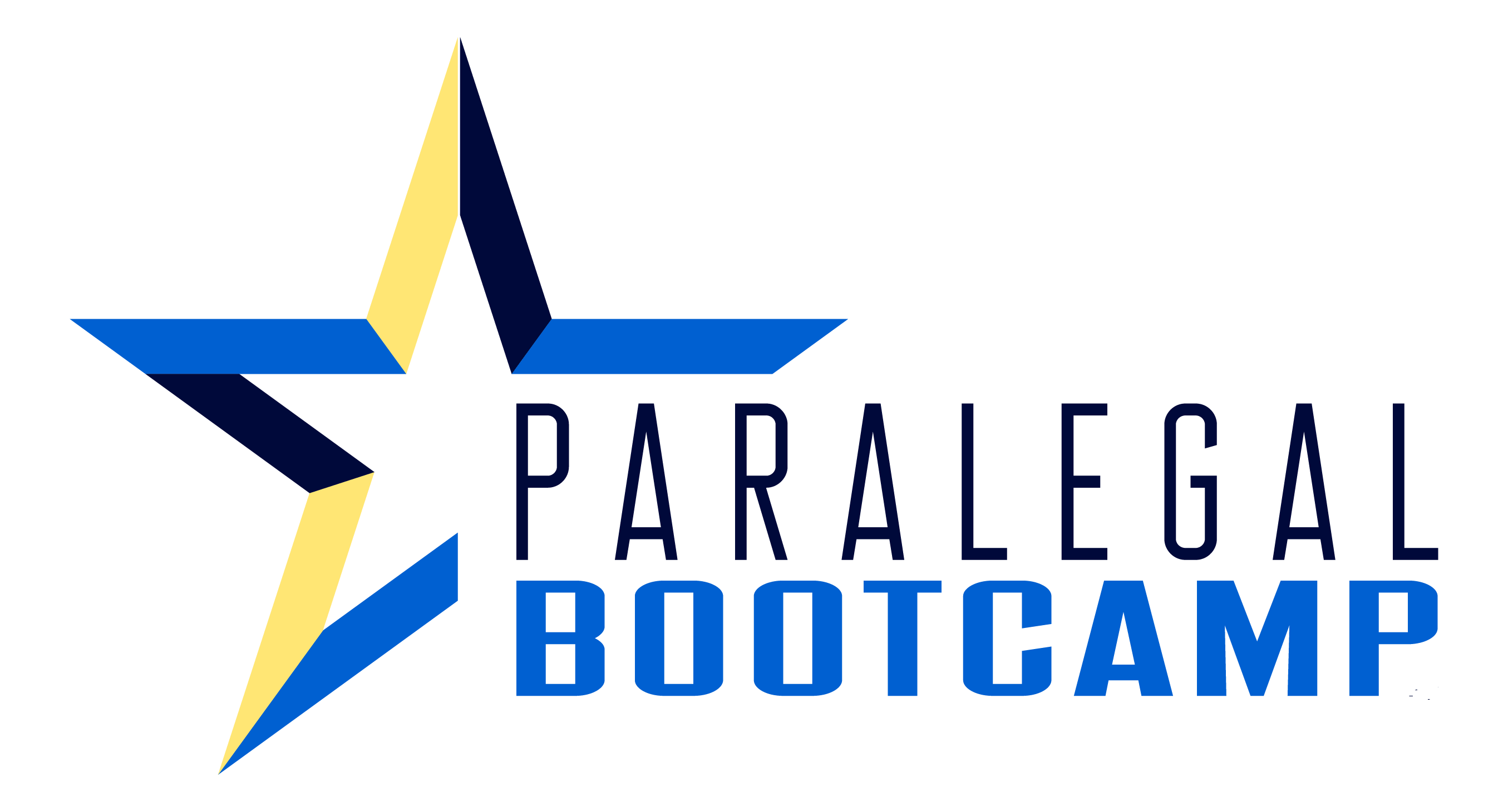Summarizing medical records can be a major part of a paralegal’s job, yet it is one that gets little attention in the curriculum of many paralegal certificate programs. As one who has had to learn it the hard way, I’d like to offer my top 10 tips for summarizing medical records.
1. Know Your Purpose
There is a reason you are summarizing those medical records and it shouldn’t be just to meet a billable hours quota.
If you are on the plaintiff’s side, you are trying to figure out what medical care was made necessary by the subject incident, and what it cost. You are also trying to determine whether your law firm should finance further care (if your firm offers that).
If the doctor orders an MRI, but medical expenses to date are over half the small policy limits, there is probably nothing to be gained by the MRI, whereas for the same plaintiff, in a case with million dollar policy limits, an MRI showing herniated discs could substantially raise the value of the case and allow the firm to obtain a higher settlement for the client. You need to know the likely policy limits as well as the symptoms of a herniated disc.
If you receive records from the defense, you need to check for pre-existing conditions or past treatment for similar injuries, but those aren’t a focus except to the extent that they reflect on the credibility of your client.
On the defense side, you are summarizing medical records to assemble a medical history that may show that whatever condition the plaintiff claims was caused by your incident was actually pre-existing, at least in part.
Also, if you are an insurance defense litigation paralegal you also want to know what problems are alleged, which doctors have treated the plaintiff, what their recommendations are, and whether the plaintiff has followed those recommendations. You are looking for the names of other healthcare providers, any pre-existing conditions shown in the record, and any inconsistencies between what the plaintiff tells different doctors.
Defendants walk a fine line between getting buried in irrelevant minutia and missing clues that could make a difference.
It may be useful to note that the plaintiff’s primary care doctor never knew about the alleged injury even though the plaintiff was seen regularly for a variety of ills, so yes, you need to note that the plaintiff was seen for those ills, but no, you don’t need to say more than “sore throat”–unless he mentioned that the sore throat was exacerbating his neck pain.
Personal Injury Paralegal Boot Camp
As a personal injury paralegal, you have an important role in the pre-litigation phase of your claim files.
But where do you even start when you’re managing 80+ active files?
This online course will give you all the tools to manage that heavy case load. It walks you through every phase of your personal injury claim files, from the case intake through the demand package and more.

2. Bates Number or Bookmark
Often when you start work on a case you don’t know how many medical records you will receive. However, today’s PDF programs make it very easy to Bates number and/or bookmark records, and doing so should be part of your regular routine. If page 245 of 456 pages of records from hospital X mentions that the patient was complaining of back pain shooting into his leg three weeks before the accident, you don’t want to have to hunt for that page before the plaintiff’s deposition. Even if you are not able to Bates number, note the page in the pdf file.
If you are not familiar with the Bates Numbering and Bookmarking features of your PDF software, now is the time to learn. These features are generally found on the paid versions of the software, not the “reader” versions.
PRO PARALEGAL TIP: I usually number records with the plaintiff’s name or initials and the name or initials of the practice or doctor. For example, if the plaintiff is John Smith and I’m looking at Dr. Jones’ records, I will number them Smith–Jones 001 through Smith–Jones 087 for 87 pages of medical records.
3. Use a Grid and a Narrative
Generally, a sortable table in a spreadsheet is the easiest way to organize a medical records summary. Create columns for “Date”, “Provider”, “Summary”, “Bill” and “Bates”.
If there are a large number of relatively small entries from the same provider, instead of noting every $40, $150, and $75 charge incurred at thrice-weekly visits, simply note the total as part of the final entry, unless, of course, the attorney wants every charge noted by date.
When records from other providers or more records from the first provider are obtained, they can be easily added to the end of the summary, and the table is sorted by date to put them in place.
Once the grid is complete, many attorneys appreciate a quick narrative, either in the form of a memo/email or as part of a letter to the client. The grid is good for showing things happening over time, but the summary narrative would read that plaintiff was treated at XYZ clinic for soft tissue injuries for twelve weeks before undergoing an MRI at Images R Us, which found a herniation at L3-4. Following that he was treated by the neurosurgeon, Dr. Cutter, who performed a fusion at General Hospital.
4. Check the Findings
The reports on most diagnostic studies, whether x-rays, CT scans, MRIs, or surgical tests like biopsies usually include descriptive paragraphs about different things shown, and then, at the bottom, a line titled “Findings”. Those findings are what need to be considered when summarizing medical records.

5. Connect the Dots
Especially for the defense side, part of the purpose of the medical summary is to connect the dots and find medical treatment not mentioned by the plaintiff in discovery.
A review of the patient information forms from various providers may give clues such as other physicians seen, other drugs taken, or even other accidents. Is the pharmacy listed on the form the same pharmacy that is listed in the discovery responses? If the doctor’s file shows surgery at the Same Day Surgery Center, do you have their records?
PRO PARALEGAL TIP: Another place to look for evidence of pre-existing problems is the plaintiff’s health insurance records. Especially when reviewing records not related to the accident, check for names of health insurance companies and send them a subpoena or a request for a Detailed Claims Listing which should give you the names of the providers, the dates of treatment, and the ICD-10 codes for the condition being treated.

Free Guide for
Personal Injury Paralegals
Are you ready to be a rockstar personal injury paralegal?
When you’re starting out, it’s hard to know where to even start. We’ve got you covered! Here is your checklist.
The Paralegal Boot Camp gives you 8 actionable steps to get you started right now on a path to success.
Our free guide shares the 8 steps you need to take right now to start standing out at your firm.
6. Don’t Note Normal
One typical rookie mistake when summarizing medical records is to spend a lot of words recounting normal findings. The fact that the plaintiff has two legs does not belong on the medical summary, nor does the fact that he has full cervical range of motion if he is complaining of lower back pain–unless, of course, he had limited cervical range of motion last month.
Many electronic medical record programs automatically bold abnormal findings. But in your role as a personal injury paralegal or an insurance defense paralegal, you can’t rely on this from every medical provider.
7. Become Familiar with Local Doctors
The reality is that most litigation-related injuries are to the neck, back, and knee. While it is not impossible to injure other body parts in a way that would lead to litigation, those cases are few and far between.
Personal injury paralegals and insurance defense paralegals should become familiar with local clinics that treat accident plaintiffs as well as local orthopedists and neurosurgeons. The more familiar you are with the way practices keep their records, the more efficiently you will be able to review the records.
You will also learn that when Dr. X is thinking about surgery, he always orders tests A, B, and C, so if you see orders for them, you know what is coming.
8. Learn About Medications
Besides health insurance records, the best place to “go fishing” for information about a plaintiff’s medical history is her/his prescription records. These records can lead you to additional records if you are familiar with what the medications are typically prescribed for.
If the plaintiff filled prescriptions for Naproxen and Cyclobenzaprine written by a doctor who does not come up on a Google search, the chances are high that he/she was seen in the emergency room by a resident for some type of soft tissue injury–now you just have to figure out which emergency room.
Norco plus Amoxicillin generally equals toothache. Periodic prescriptions for Sumatriptian (or any drug ending in triptian) likely means a history of migraine headaches.
When reviewing pharmacy records, look up any drug with which you are not familiar. “Red Flag” drugs are muscle relaxants, narcotics, psychiatric medications, and anti-inflammatories.
9. Learn the Important Buzz Words
In determining what is important when summarizing medical records, having a list of things to look for helps. Often, legal cases involve separating pre-existing or degenerative problems from those caused by trauma. Words like “fissure”, “herniation”, “rupture”, “tear”, “ecchymosis” and “fracture” denote trauma while “osteophyte”, “arthritis”, and “osteoarthritis” are degenerative conditions.
The more familiar you are with terms frequently used by doctors who treat plaintiffs in your type of practice, the easier medical summaries will become.

10. Make Friends with Google
Do you know what the sternocleidomastoid is? What about the navicular bone? How is your tympanic membrane today? Do you have spondylosis or spondylolisthesis?
Medical professionals use a lot of terms that are not in common use, not to mention acronyms or abbreviations — DX, RX, ROM–are just a few. Google can translate most of them for you when you are summarizing medical records.
Conclusion
As with most other paralegal skills, practice makes perfect when preparing medical summaries. You may not have any medical training, but with repetition and taking the time to learn about the medical conditions frequently encountered in your practice, you will become better and better at changing a mountain of medical records into a molehill-sized medical summary.
PRO PARALEGAL TIP: As a resource, I’m providing you with a sample medical summary below.

Meet the Author
Ruth W. Curcuru, N.P. has over thirty years of experience as a litigation paralegal and recently passed the examination to be named a Louisiana Notary Public. At Hailey, McNamara, Hall, Larmann and Papale, L.L.P. in Metairie Louisiana she works in the fields of criminal defense and insurance defense. Her specialty is making molehills out of mountains of records.
Sample Medical Summary Form
Plaintiff: John Smith
D/A: 4/3/21
| Date | Provider | Summary | Bates | Bill |
| 3/5/18 | Brown, Dr. Margaret[1] | Complains of lower back pain after cleaning out garage this weekend. Has pain shooting down left leg when he walks. RX: Naprosyn and Flexeril[2] Insurance is Blue Cross.[3] | Brown 006[4] | (I wouldn’t note the bill because it was before the accident) |
| 3/10/18 | Workout PT | PT evaluation. Unable to walk without pain shooting down left leg. Pain 9/10 Recommend six weeks of PT, 2X/week[5] | Workout 015-020 | |
| 3/12/18 | Workout PT | Treatment. Pain 10/10[6] | Workout 021 | |
| 3/15/18 | Workout PT | Treatment. Pain 8/10 | Workout 023 | |
| 3/19/18 | Workout PT | Treatment. Pain | Workout 024 | |
| 3/21/18 | Workout PT | No-show | Workout 025 | |
| 4/1/20 | My, Dr. G.P. | Phone call. Has ear infection, please call in drops. RX Cortisporin Otic drops, called to Walgreens[7] | My 021 | |
| 1/1/21 | Date approximate. [8]Possible accident per MRI report | MRI 002 | ||
| 3/5/21 | My, Dr. G.P. | Called in. Requested ear drops for earache. Cortisporin Otic called into Wal-Mart[9] | ||
| SUBJECT ACCIDENT | ||||
| 4/5/21 | Car Accident Clinic | Complained of being rear-ended two days ago. Referred by attorney. Complains of back and neck pain. No prior history. On exam hand tenderness and spasm to the cervical, lumbar and thoracic paraspinal muscles. Pain 6/10. No radiation into extremities. RX: Ultram, Cyclobenzaprine. In-office therapy 3x/week. | CAC 025 | |
| 4/6/21 | Car Accident Clinic | Therapy | CAC 056 | |
| 4/8/21 | Car Accident Clinic | Therapy | CAC 056 | |
| 4/10/21 | Car Accident Clinic | Therapy | CAC 057 | |
| 4/15/21 | Car Accident Clinic | Therapy. Also saw doctor. Exam unchanged since 4/5/21, but is complaining of pain radiating into left leg. MRI ordered. Pain 8/10. | CAC 026 | |
| 4/17/21 | Car Accident Clinic | Therapy | CAC 058 | |
| 4/18/21 | Hearing, Dr. Hardy | ENT visit. Complained of repeated ear infections in last year leading to dizziness. Has fallen several times due to dizziness.[10] | Hearing 009 | $250[11] |
| 4/19/21 | Car Accident Clinic | Therapy | CAC 058 | |
| 4/20/21 | MRIs R US | MRI of lumbar spine, Back pain shooting into left leg since car accident about four months ago. Hernitions at L3-4 and L4-5.[12] | MRI 002 | $750.00 |
| 4/22/21 | Car Accident Clinic | Therapy | CAC 059 | |
| 4/30/21 | Car Accident Clinic | Exam by PA. Unchanged since last visit. Referred to Neurosurgeon based on MRI results. Discharged | CAC 28 | Total bill $1600.00[13] |
| 5/15/21 | Cutter, Dr. Ima | Complains of lower back pain shooting into left leg since he was rear-ended in April. MRI positive for herniated disc. Recommend discectomy and fusion L3-4 and L4-5. Exam shows limited ROM in lumbar spine with parathesis along anterior of left leg. Will consider options.[14] | Cutter 06 | $800.00 |
[1] Entering the doctor’s name this way makes it easy to sort the table by either date or provider
[2] Because this entry is so old, I probably wouldn’t say much more than this.
[3] If you are trying to get a long-term medical history, send a subpoena/request to Blue Cross for a Detail Claims Listing
[4] Even though I would number the pages Jones–Brown I only use Brown on the summary
[5] Though this evaluation is going to have a lot of measurements of what the plaintiff can and cannot do muscle-wise, what is important is the complaint and what they are going to do about it–you aren’t trying to treat the plaintiff, only write about the treatment
[6] It is rarely important what the physical therapist did, just note that plaintiff was treated, any interesting comments (like mentioning another accident). Pain levels may be useful
[7] I don’t care about his ear infection, but if I didn’t know his drugstore, now I do.
[8] Below on the MRI report you’ll note he mentioned an accident about four months ago
[9] Another drugstore to follow up with.
[10] The important thing here is the fall–I don’t really care what is wrong with his ears, unless he said
[11] Even though this is probably not related to the accident, I’ll usually list the bill in case plaintiff decides later that it is related. My report to the client/attorney would note that the bill exists but would not include it in the total medical bills related to the accident.
[12] The report will probably have each level listed in the findings. Unless I’m sure I know the findings are normal, I will probably recount them
[13] Rather than listing the cost for each of these repeating and frequent visits, I often just list the total on the final visit.
[14] I would probably capture more detail about this visit.
Personal Injury Paralegal Boot Camp
As a personal injury paralegal, you have an important role in the pre-litigation phase of your claim files.
But where do you even start when you’re managing 80+ active files?
This online course will give you all the tools to manage that heavy case load. It walks you through every phase of your personal injury claim files, from the case intake through the demand package and more.


























